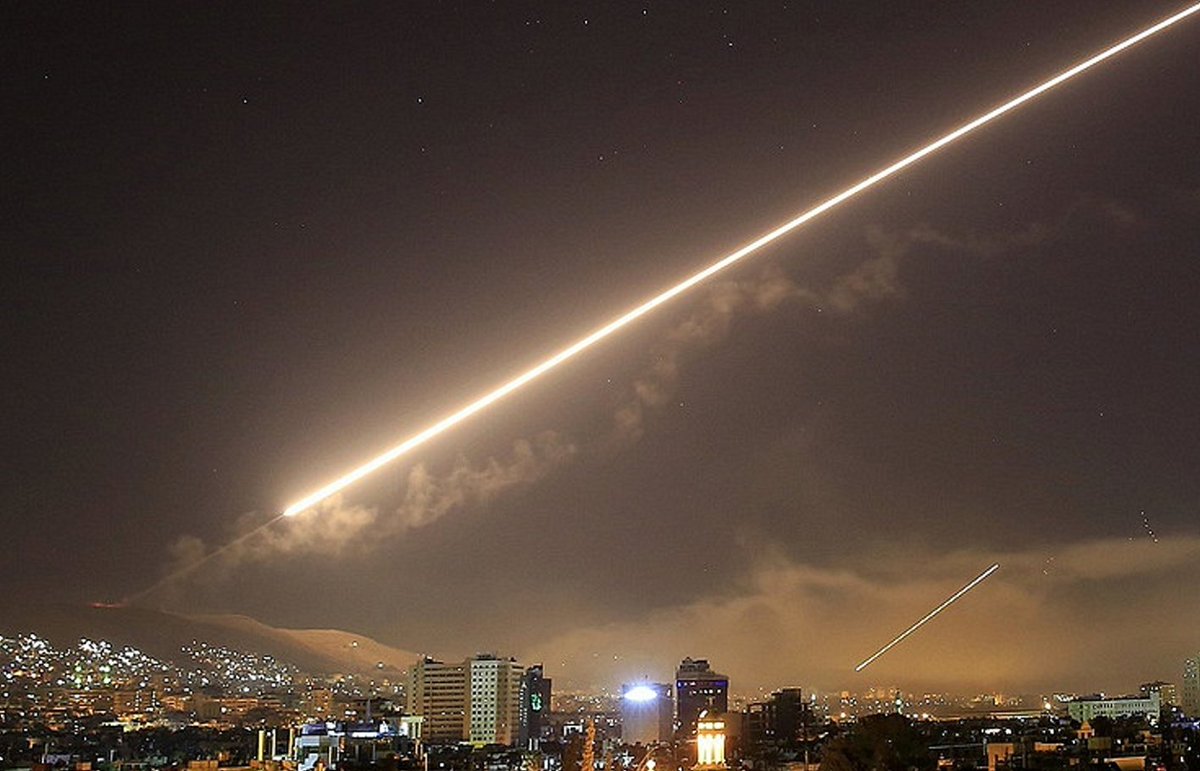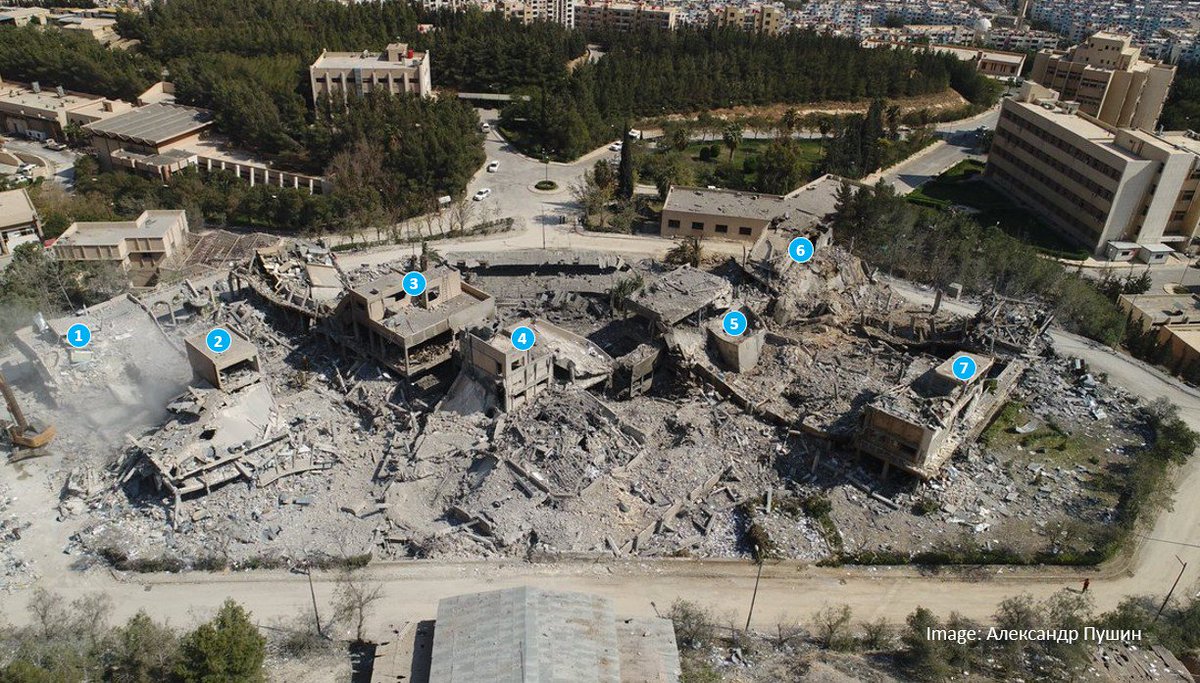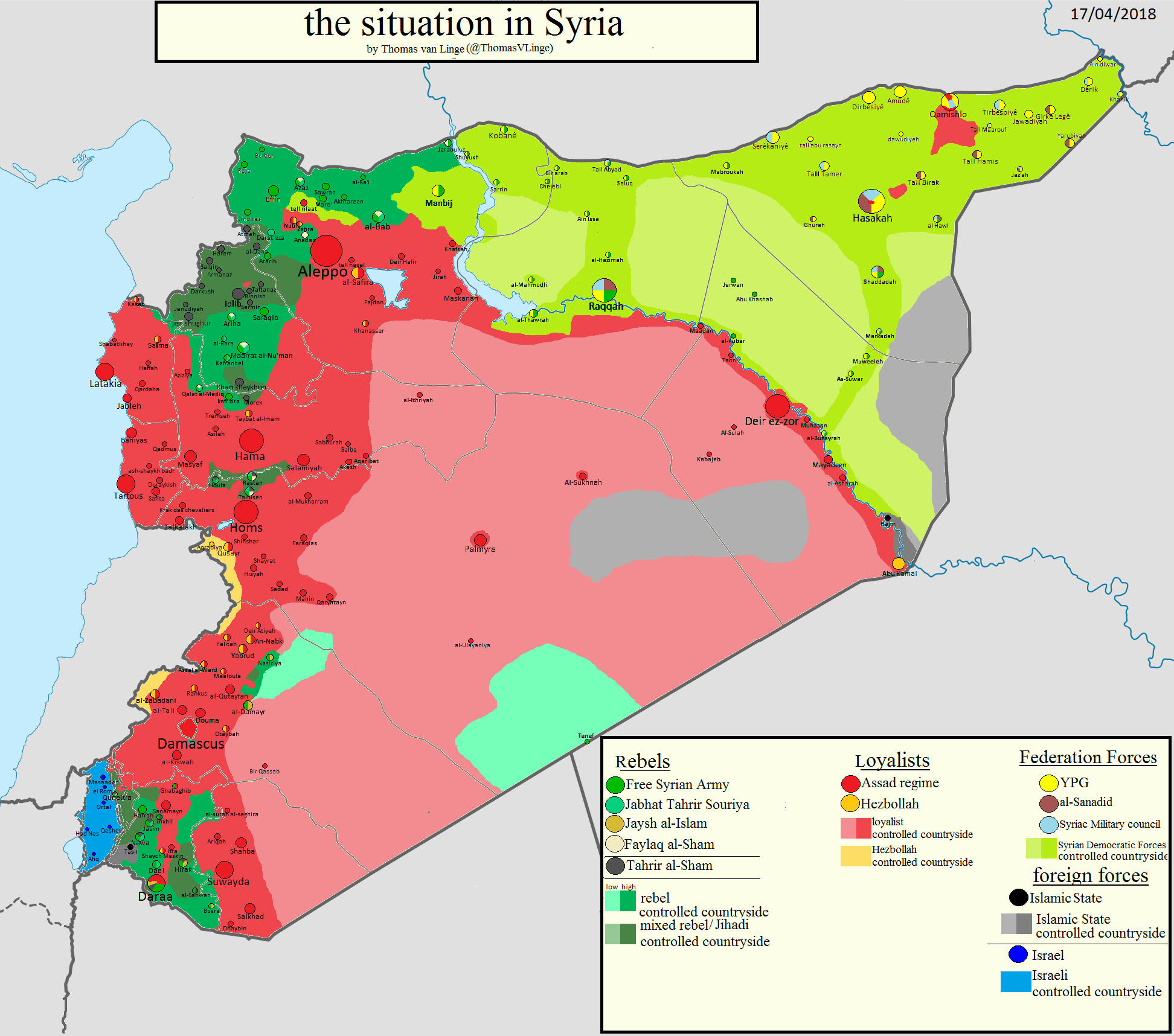You are using an out of date browser. It may not display this or other websites correctly.
You should upgrade or use an alternative browser.
You should upgrade or use an alternative browser.
ISIS/ISIL conflict in Syria/Iraq (No OpEd, No Politics)
- Thread starter Jeff Head
- Start date
Jura The idiot
General
now I read
OPCW says investigators not deployed in Douma yet
Xinhua| 2018-04-18 23:50:39
OPCW says investigators not deployed in Douma yet
Xinhua| 2018-04-18 23:50:39
The global chemical arms watchdog, Organization for the Prevention of Chemical Weapons (OPCW), said Wednesday that its fact-finding mission (FMM) team has not yet been deployed in Douma, Syria.
"At present, we do not know when the team can be deployed to Douma. I shall only consider such deployment following approval by the United Nations Department of Safety and Security (UNDSS), and provided that our team can have unhindered access to the sites," OPCW director-general Ahmet Uzumcu told a meeting of the organization's executive council.
Nine members of the OPCW team arrived in Damascus on Saturday.
"The security for the sites where the FFM plans to deploy was under the control of the Russian Military Police. UNDSS has made the necessary arrangements with Syrian authorities to escort the team to a certain point and then for the escort to be taken over by the Russian Military Police. However, the UNDSS preferred to first conduct a reconnaissance visit to the sites, which took place yesterday [Tuesday]. FFM team members did not participate in this visit," said Uzumcu.
"The UNDSS will continue to work with the Syrian national authority, the local councils in Douma, and the Russian Military Police to review the security situation," he added.
OPCW is investigating the alleged use of chemical weapons during the attack in Douma on April 7.
Activists, local rescuers and rebels in Syria claim that the Syrian forces used chlorine gas in the attack on Saturday against Douma, in the rebel-held area near Damascus. The Syrian government has denied the allegations and called it fake news.
should be "clickable for zooming" (or "zoomable upon clicking"? LOL):
(in case the map didn't show and you cared, try )
al-Queda still controls a lot of territories
nicky
Junior Member
DAMASCUS, April 19. /TASS/. Two cruise missiles found unexploded by the Syrian military after the US missile strike on April 14 have been handed over to Russia, a source in the Syrian defense ministry told TASS on Thursday.
"Two cruise missiles that did not detonate during the US missile strike on Syria overnight to April 14 were found by the Syrian military. Both are in rather good condition. These missiles were handed over to Russian officer the day before yesterday (April 17)," the source said, adding that both "were sent to Russia by plane yesterday (April 18)."
TASS has no official confirmation of this information from the Russian defense ministry.
More:
"Two cruise missiles that did not detonate during the US missile strike on Syria overnight to April 14 were found by the Syrian military. Both are in rather good condition. These missiles were handed over to Russian officer the day before yesterday (April 17)," the source said, adding that both "were sent to Russia by plane yesterday (April 18)."
TASS has no official confirmation of this information from the Russian defense ministry.
More:
Jura The idiot
General
now noticed the tweet
sez it's found two unexploded cruise from last weekend's attack in "rather good condition," has turned them over to who sent them by air to for further examination

sez it's found two unexploded cruise from last weekend's attack in "rather good condition," has turned them over to who sent them by air to for further examination

Jura The idiot
General
Today at 7:44 AM
I'm wondering if the Pentagon says anything or ignores
... etc. is right now on top of Breaking News at gazeta.ru ()now noticed the tweet
sez it's found two unexploded cruise from last weekend's attack in "rather good condition," has turned them over to who sent them by air to ...
I'm wondering if the Pentagon says anything or ignores
Jura The idiot
General
in case you didn't know
Now Iraq Has Started Bombing Syria Too
Now Iraq Has Started Bombing Syria Too
The U.S., France, the UK, Israel, Turkey, Russia, and other countries that are participating in the U.S.-led air campaign against ISIS in eastern Syria are all bombing the war-torn country. Now, after a week of aerial chaos over Syria that started with a strike on chemical weapons-related targets, followed by repeated attacks by the Isreali Air Force, and news that Iran is assets to the country, as well as the possibility that ISIS may again there, Iraq has waded into the air combat fray.
The office of Iraq's prime minister issued the following curt statement to mark the country's opening up of air operations in Syria:
"On the orders of the Commander-in-chief of the armed forces, Dr. Haider Abadi, our heroic Air Force on Thursday carried out deadly airstrikes against the sites of the terrorist ISIL gangs in Syria on the Iraqi border."
The post-Saddam Iraqi Air Force has never, as far as we know, ventured into another country's airspace and dropped weapons on a target operationally—that is until now. There is very limited information at this time on exactly what targets were hit and with what aircraft. Iraq has a number of fixed-wing combat aircraft including F-16IQs, T-50s, Su-25s, and armed Cessna Caravans, as well an array of helicopter gunships that could have prosecuted targets in Syria. But what's most pressing at this time is learning how the strikes were deconflicted with , or if they were at all.
We will update this post as more information comes available.
Update: 5:14am PST—
The that the strikes were coordinated with the Assad government and were carried out using F-16s. If indeed the Iraqi government, which has close ties to Iran—and Iran backs Assad directly—did not work with the U.S. on these sorties it could drastically complicate the airspace over eastern Syria and it could lead to a major fracture in U.S.-Iraq military and diplomatic relations.
Update: 5:30am PST—
Last week prime minister al-Abadi said Iraq would defend itself from militant threats across their own borders. The Iraqi government declared victory over ISIS in December of 2017.
We have heard that five targets were struck during the raid.
Jura The idiot
General
why not to hear from AirForceMag Why Syria’s Chemical Weapons Didn’t Disperse
4/16/2018
4/16/2018
Russian trolls have been dismissing the effectiveness of the US-Anglo-French strike on Syria’s chemical weapons infrastructure since the April 16 attack, saying, in effect, that if a true chemical weapons site had been hit, then any stored weapons at the facility would have been released, injuring or killing civilians in the area. No such release has been detected.
US officials have only said that the strike was designed to “mitigate” such a dispersal of toxic gases.
Asked what those ”mitigation” efforts may have been, Air Combat Command chief Gen. Mike Holmes, in an interview Monday, declined to comment specifically on the Syria situation, “because I wasn’t involved in it.”
However, “in generic terms,” he said, when attacking a chemical weapons site, the calculus involves “a thorough target study,” that models “the wind, the weather, and everything else.”
Then, “the weaponeering solution is to choose the right weapon and the right number of weapons, to reduce the risk” of a chemical weapon getting out.
Holmes advised paying close attention to the number of weapons employed against the target; numbers put out by the Pentagon itself on Saturday morning.
“Numbers matter in terms of reducing the risk of stuff being spread around, and how much you … burn up on-site.”
The Barzeh research and development site was struck by 57 Tomahawk Land-Attack Missiles (T-LAMs) and 19 JASSM-ER missiles, each with a warhead of at least 1,000 pounds of explosive, but with considerably more destructive effect, meaning the site was hit by more than 76,000 pounds of explosive. By contrast, hardened targets struck in the two Iraq wars were typically taken out by two 2,000-pound bombs.
nicky
Junior Member
MOSCOW, April 19. /TASS/. Containers with chlorine from Germany and smoke barrels from Salisbury have been found in Syria’s Eastern Ghouta, Russian Foreign Ministry Spokeswoman Maria Zakharova told reporters at a press briefing on Thursday.
"Syrian government troops have found containers with chlorine, the most deadly chemical weapon, brought from Germany, along with smoke barrels made in the city called (guess where?) Salisbury, the UK," she emphasized.
"I would also like to draw attention to the fact that back in January 2013 the British newspaper Daily Mail published an article that revealed information about the White House’s consent to a chemical attack in Syria by the US and its allies with a view to to subsequently blaming President Assad for it and intensify military operations in that country,"
More:
"Syrian government troops have found containers with chlorine, the most deadly chemical weapon, brought from Germany, along with smoke barrels made in the city called (guess where?) Salisbury, the UK," she emphasized.
"I would also like to draw attention to the fact that back in January 2013 the British newspaper Daily Mail published an article that revealed information about the White House’s consent to a chemical attack in Syria by the US and its allies with a view to to subsequently blaming President Assad for it and intensify military operations in that country,"
More:
Jura The idiot
General
DoD Officials Erred About Weapons, Fighters Used in Syria Strike Mission
Saturday at 8:29 PM
Monday at 9:48 AM
is that it? (LOL)The did have a role in the Syria strike after all, and the extended range version of the Joint-Air-to-Surface Standoff Missile-Extended Range wasn't used, according to new statements from U.S. Air Forces Central Command.
The stealth fighter was providing overwatch for U.S. and partner troops on the ground while the U.S., U.K. and France were launched strikes on chemical weapons facilities in western Syria, officials said.
Meanwhile, the JASSMs used in the April 14 strikes "were, in fact, not JASSM Extended Range (JASSM-ER) munitions, [but] rather, the munitions used were JASSM-A, or the standard, non-extended range versions of the munition," AFCENT spokesman Capt. Mark Graff said Thursday.
The use of 19 JASSMs still marked the first operational use of any variant of the missile, Graff said.
AFCENT officials said that they wanted to correct the record after Military.com asked the command earlier this week about the F-22 missing out completely on the high-profile operation.
Lt. Col Damien Pickart, also an AFCENT spokesman, originally told Military.com on Monday the Air Force's premier fifth-generation fighter was not flying alongside a pair of bombers that dropped missiles on the Syrian targets, nor was it in the area.
Graff, told Military.com on Thursday that, "U.S. F-22 Raptors played an integral role in protecting ground forces during and after the multinational strikes against Syrian chemical weapons production facilities on the morning of April 14."
Graff did not say how many F-22s were airborne, nor in what regions in Syria they conducted the overwatch mission.
"Thanks to its unique fifth-generation capabilities, the F-22 was the only airframe suited to operate inside the Syrian integrated air defense systems, offering an option with which to neutralize [Integrated Air Defense System] threats to our forces and installations in the
region, and provide protective air support for U.S., coalition and partners on the ground in Syria," Graff said.
It is unclear why the Pentagon or AFCENT officials did not initially disclose the F-22's role when speaking in detail about the strike during a briefing on Saturday.
It is also unclear why officials touted the Lockheed Martin-made JASSM-ER.
When on Saturday, whether the JASSM used was Lockheed's latest version, Marine Lt. Gen. Kenneth McKenzie, the Joint Staff Director, confirmed its first .
"So we did employ the JASSM-ER," McKenzie replied.
Saturday at 8:29 PM

'we're confident all our missiles reached their targets' ...:
Monday at 9:48 AM
Today at 7:28 AM
actually it's been one of the most bizarre shows in military history:
three buildings, each getting 19 TLAMs on average
according to Department of Defense Press Briefing by Pentagon Chief Spokesperson Dana W. White and Joint Staff Director Lt. Gen. Kenneth F. McKenzie Jr. in the Pentagon Briefing Room ,
and no apparent damage around like trees OK huh?!
So, I got interested in what's still standing at Barzeh after 76 missiles. (Thread)

(if interested, click 'Show this thread' below that tweet, or
here)

